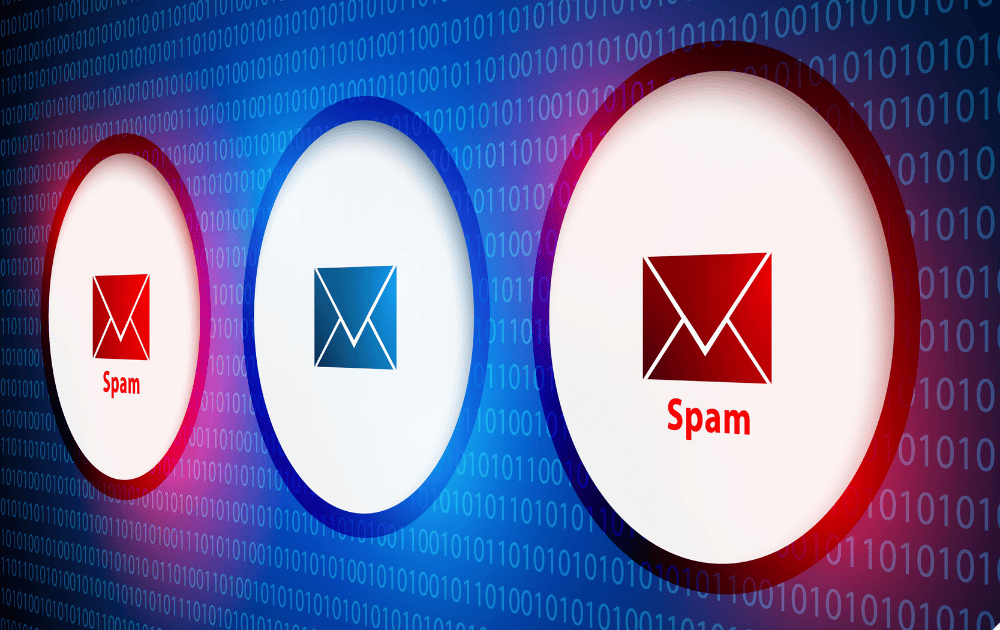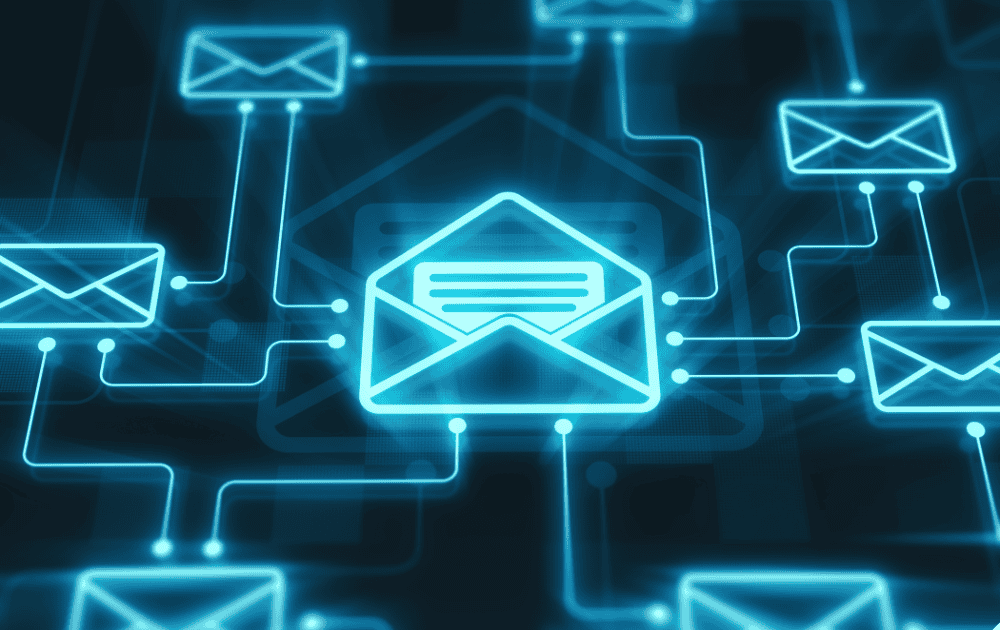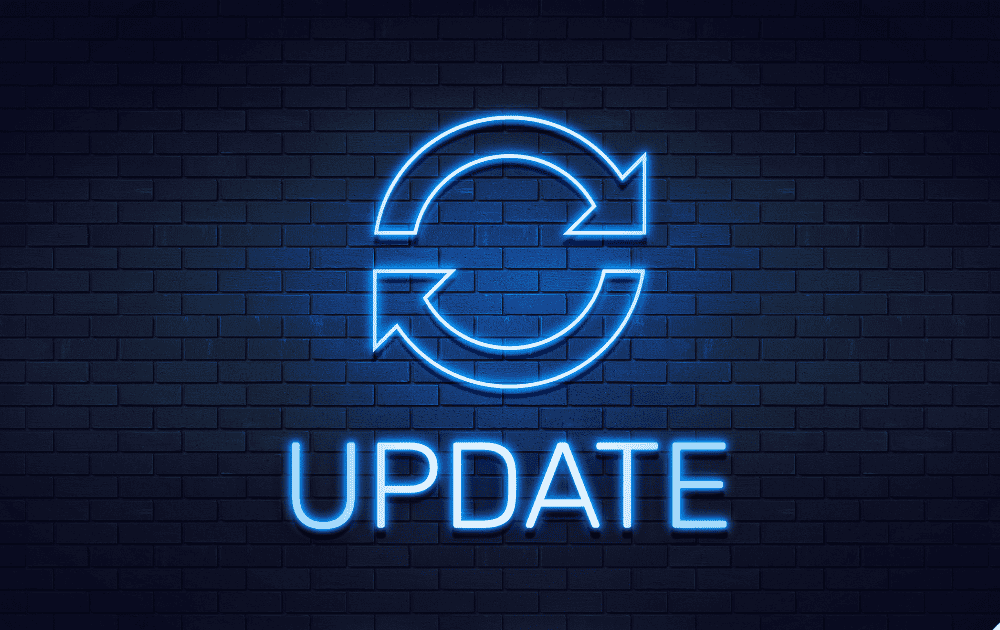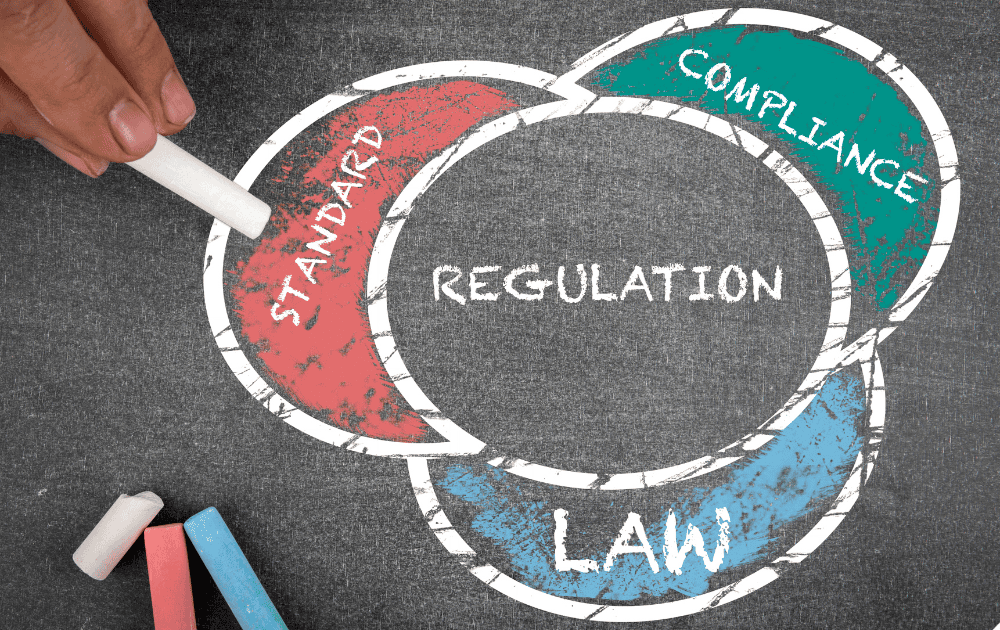An email security gateway is essential for safeguarding your organization against cyber threats lurking in your inbox. This powerful tool filters out spam, phishing attempts, and malware, helping to keep your sensitive information secure. Understanding how an email security gateway works can empower your team to use email safely and confidently.
Let’s explore what you need to know about these gateways and how they can protect your organization!
Understanding the Role of Email Security Gateways
Email security gateways act as filters that analyze incoming and outgoing emails to identify and block potential threats before they reach the intended recipients. By scanning email content, attachments, and links, these gateways can detect malicious elements such as phishing attempts, malware, and spam.
Through the use of advanced algorithms and threat intelligence, email security gateways can identify suspicious patterns and behaviors to proactively protect organizations from cyber attacks. By acting as a barrier between the external email environment and the internal network, these gateways help prevent unauthorized access and data breaches.

Importance of Email Security in the Digital Age
In today's increasingly interconnected and data-driven world, email security has become a critical component of overall cybersecurity strategies. As cyber threats continue to evolve and become more sophisticated, the need to secure communication channels, especially email, has never been more pressing.
Ensuring the confidentiality, integrity, and availability of sensitive information is essential to maintaining trust with customers, partners, and employees. Email security gateways play a pivotal role in mitigating risks associated with email-borne threats, safeguarding intellectual property, financial data, and personal information from falling into the wrong hands.
Prioritizing email security in the digital age allows IT companies and professionals to significantly enhance their overall cybersecurity posture and showcase their commitment to protecting sensitive data. Implementing robust measures, such as deploying email security gateways, serves as a proactive step in fortifying defenses against cyber threats. These strategies maintain the resilience of organizational communication channels, ensuring that sensitive information remains secure while fostering trust and confidence among stakeholders.
Features of an Email Security Gateway
An Email Security Gateway is a crucial tool for safeguarding your organization's data and communications from various cyber threats. Let's examine the key features that an Email Security Gateway offers: spam filtering and anti-phishing capabilities, malware and virus protection, and data loss prevention measures.
Spam Filtering and Anti-Phishing
One of the primary functions of an Email Security Gateway is to filter out unsolicited and potentially harmful emails, commonly referred to as spam. By employing advanced algorithms and pattern recognition techniques, the gateway can effectively identify and block spam emails before they reach the recipient's inbox. Additionally, the gateway is equipped with anti-phishing mechanisms that detect and prevent phishing attempts, where cybercriminals impersonate legitimate entities to deceive recipients into divulging sensitive information.
Malware and Virus Protection
Emails are a common vector for malware and viruses to infiltrate an organization's network. An Email Security Gateway acts as a critical line of defense by scanning incoming and outgoing emails for malicious attachments and links. By leveraging real-time threat intelligence and proactive scanning algorithms, the gateway can detect and quarantine harmful content, preventing malware infections and data breaches.
Data Loss Prevention
Data loss prevention is a critical aspect of email security, especially in sectors handling sensitive information such as financial data, intellectual property, or personal details. An Email Security Gateway employs data loss prevention mechanisms to monitor and control the flow of sensitive data within emails. By defining policies that flag and restrict the transmission of confidential information, organizations can prevent unauthorized data leaks and ensure compliance with privacy regulations.
In summary, the robust feature set of an Email Security Gateway, encompassing spam filtering and anti-phishing measures, malware and virus protection, and data loss prevention capabilities, plays a fundamental role in fortifying the email communications of modern organizations against a myriad of cyber threats. By investing in a comprehensive Email Security Gateway solution, businesses can enhance their cybersecurity posture and safeguard their valuable data assets effectively.
Implementing an Email Security Gateway
An email security gateway is essential for safeguarding your organization's email communications. This section explores the various aspects of email security gateway implementation, including deployment options, integration with existing systems, and training and user awareness.
Deployment Options
Before implementing an email security gateway, organizations need to consider the deployment options that best suit their needs. There are typically two main deployment models for email security gateways: on-premises and cloud-based.
| Deployment Option | Description |
| On-Premises | In this model, the email security gateway hardware and software are deployed and maintained on-site within the organization's infrastructure. This provides greater control and customization but requires dedicated resources for maintenance and updates. |
| Cloud-Based | In the cloud-based deployment option, the email security gateway is hosted and managed by a third-party service provider. This model offers scalability, flexibility, and often lower upfront costs. Organizations benefit from automatic updates and centralized management, but relinquish some control over the infrastructure. |
Choosing the right deployment option depends on factors such as budget, IT resources, scalability requirements, and overall security posture.

Integration with Existing Systems
Integrating the email security gateway with existing IT systems is crucial for seamless operation and maximum effectiveness. The email security gateway should be compatible with the organization's email servers, network infrastructure, and other security solutions in place.
The integration process should ensure that the email security gateway can effectively communicate and collaborate with existing systems to streamline operations, enhance threat detection and response capabilities, and maintain data integrity across the network.
Integrating the email security gateway with other security tools, such as endpoint protection solutions, network firewalls, and security information and event management (SIEM) systems, enables organizations to establish a comprehensive security ecosystem. This cohesive approach enhances protection against evolving cyber threats, allowing for improved threat detection, response, and overall security posture.
Training and User Awareness
While implementing robust technical solutions is essential, training and user awareness play a critical role in the success of an email security gateway deployment. Organizations should provide comprehensive training to employees on email security best practices, identifying phishing attempts, and recognizing potential security threats.
Regular security awareness programs can help employees understand the importance of email security, recognize common attack vectors, and take proactive measures to safeguard sensitive information. By fostering a culture of security awareness within the organization, employees become a frontline defense against email-based attacks.
Investing in ongoing training and education ensures that users remain vigilant, stay informed about the latest security threats, and actively contribute to maintaining a secure email environment. User awareness is a fundamental component of an effective email security strategy and complements the technical safeguards in place.
Best Practices for Email Security
When it comes to safeguarding sensitive information and protecting against cyber threats, implementing best practices for email security is paramount. By incorporating strong password policies, regular software updates, and providing comprehensive employee training on security awareness, organizations can enhance their overall email security posture.
Strong Password Policies
One of the foundational pillars of email security is enforcing strong password policies across all user accounts. Weak passwords are susceptible to brute-force attacks and unauthorized access. Implementing the following guidelines can bolster password security:
| Password Policy | Recommendations |
| Complexity | Include a mix of letters, numbers, and special characters. |
| Length | Require passwords to be a minimum of 8-12 characters. |
| Rotation | Enforce regular password changes to mitigate risks of prolonged exposure. |
| Two-Factor Authentication | Enable additional security layers through 2FA for enhanced protection. |
Adhering to stringent password requirements and encouraging secure password practices significantly reduces the likelihood of unauthorized access and data breaches. Implementing measures such as complex password policies, regular password updates, and educating employees on the importance of password security creates a robust defense against potential cyber threats. This proactive approach fosters a culture of cybersecurity awareness and protects sensitive organizational data from malicious actors.

Regular Software Updates
Keeping email security software up to date is essential for staying ahead of evolving cyber threats. Regular software updates and patches address known vulnerabilities and strengthen the overall security infrastructure. Key considerations for software updates include:
| Software Update Best Practices |
| Install updates promptly to patch security vulnerabilities. |
| Schedule regular maintenance windows for updates and patches. |
| Utilize automated update tools for seamless integration. |
| Test updates in an isolated environment before deployment to mitigate potential disruptions. |
Prioritizing timely software updates and maintenance proactively protects email systems from emerging threats and vulnerabilities. Regular updates ensure that security patches are applied, minimizing the risk of exploitation by cybercriminals. Additionally, maintaining up-to-date software enhances the overall functionality and reliability of email systems, contributing to a secure and efficient communication environment within the organization.
Employee Training on Security Awareness
While technology plays a crucial role in email security, employee awareness and behavior also significantly impact the organization's overall security posture. Comprehensive training programs that educate staff on security best practices and awareness are essential. Key components of employee training include:
| Security Awareness Training |
| Recognizing phishing attempts and social engineering tactics. |
| Identifying malicious email attachments and links. |
| Reporting suspicious emails and security incidents promptly. |
| Promoting a security-conscious culture throughout the organization. |
A security-conscious workforce, supported by ongoing training on emerging threats, empowers employees to actively participate in defending against email security breaches. When employees are well-informed about potential risks, they can recognize suspicious activity and take appropriate action to mitigate threats.
Integrating these best practices into email security protocols enables IT professionals and organizations to establish a robust defense against cyber threats. This proactive approach not only safeguards sensitive information from unauthorized access or breaches but also cultivates a culture of security awareness throughout the organization.

Compliance and Regulations
This section delves into the importance of compliance, the regulations governing data protection, and strategies for ensuring email security compliance.
Importance of Compliance
Compliance with email security regulations is imperative for organizations of all sizes. By following established guidelines and best practices, companies can maintain the integrity and confidentiality of their email communications. Compliance helps build trust with customers and partners, demonstrating a commitment to protecting sensitive information and upholding data privacy standards.
Regulations for Data Protection
Several regulations govern email security and data protection to ensure the secure transmission and storage of sensitive information. These regulations set forth guidelines for handling personal data, preventing unauthorized access, and mitigating security risks. Some common regulations that IT companies and professionals need to be aware of include:
| Regulation | Description |
| GDPR (General Data Protection Regulation) | Ensures the protection of personal data of EU citizens. |
| HIPAA (Health Insurance Portability and Accountability Act) | Regulates the protection of healthcare information in the US. |
| CCPA (California Consumer Privacy Act) | Safeguards the privacy rights of California residents' personal information. |
| PCI DSS (Payment Card Industry Data Security Standard) | Sets requirements for securing payment card data. |
Ensuring Email Security Compliance
To ensure email security compliance, IT companies and professionals must implement robust security measures and adhere to established regulations. This involves deploying email security gateways with features such as encryption, authentication, and access controls. Regular audits and assessments should be conducted to identify and address any compliance gaps or vulnerabilities.
Staying informed about the latest regulations, maintaining a proactive approach to email security, and investing in compliance tools and technologies enhances an organization's overall cybersecurity posture. This multifaceted strategy effectively protects sensitive data from potential breaches and cyberattacks, ensuring that organizations not only meet regulatory requirements but also fortify their defenses against evolving threats.

Future Trends in Email Security
In the rapidly evolving landscape of email security, staying abreast of emerging trends and technologies is essential to safeguard sensitive data and mitigate potential cyber threats. Let's explore three key future trends shaping the realm of email security: artificial intelligence (AI) in email security, advanced threat detection, and evolving email security strategies.
Artificial Intelligence in Email Security
The integration of artificial intelligence (AI) into email security systems is revolutionizing the way organizations detect and respond to email-based threats. AI-powered algorithms can analyze large volumes of email data in real-time, identifying patterns and anomalies that may indicate malicious activity. By leveraging machine learning capabilities, AI enhances the accuracy and efficiency of threat detection, allowing for proactive defense against sophisticated cyber attacks.
AI-driven email security solutions can also aid in the automated response to threats, enabling rapid incident remediation and reducing the burden on IT security teams. Through continuous learning and adaptation, AI algorithms can adapt to evolving threats and trends in the email security landscape, fortifying organizations against emerging risks.
Advanced Threat Detection
As cyber threats continue to grow in complexity and sophistication, advanced threat detection mechanisms are paramount in fortifying email security defenses. Advanced threat detection technologies utilize behavioral analytics, anomaly detection, and sandboxing techniques to identify and thwart both known and unknown threats.
Employing dynamic threat detection capabilities allows organizations to identify malicious attachments, links, and content that traditional security measures might miss. Real-time monitoring and analysis of email traffic enable swift identification of suspicious activity, facilitating proactive threat mitigation and effective incident response. This approach strengthens the organization’s overall cybersecurity defenses and minimizes the risk of potential breaches.
Evolving Email Security Strategies
In response to the evolving threat landscape, organizations are adopting multifaceted email security strategies that go beyond traditional measures. Modern email security frameworks encompass a layered approach, incorporating encryption, authentication protocols, and user awareness training to enhance overall defense posture.
Moreover, the shift towards cloud-based email security solutions and integrated security platforms provides organizations with comprehensive protection against diverse threats. By embracing holistic security strategies that prioritize threat intelligence sharing and collaboration, businesses can effectively combat complex cyber threats and safeguard sensitive data.
The integration of AI-driven technologies, advanced threat detection mechanisms, and robust security strategies reflects the future trajectory of email security, empowering organizations to bolster their defenses against evolving cyber threats and ensure the confidentiality and integrity of their email communications. Stay informed and proactive in adopting these trends to fortify your email security posture and safeguard your digital assets.
At LK Tech, we offer top-notch email security solutions tailored to meet your organization’s unique needs. If you want to enhance your defenses with expert guidance, contact us today to explore our email security services in Cincinnati!


